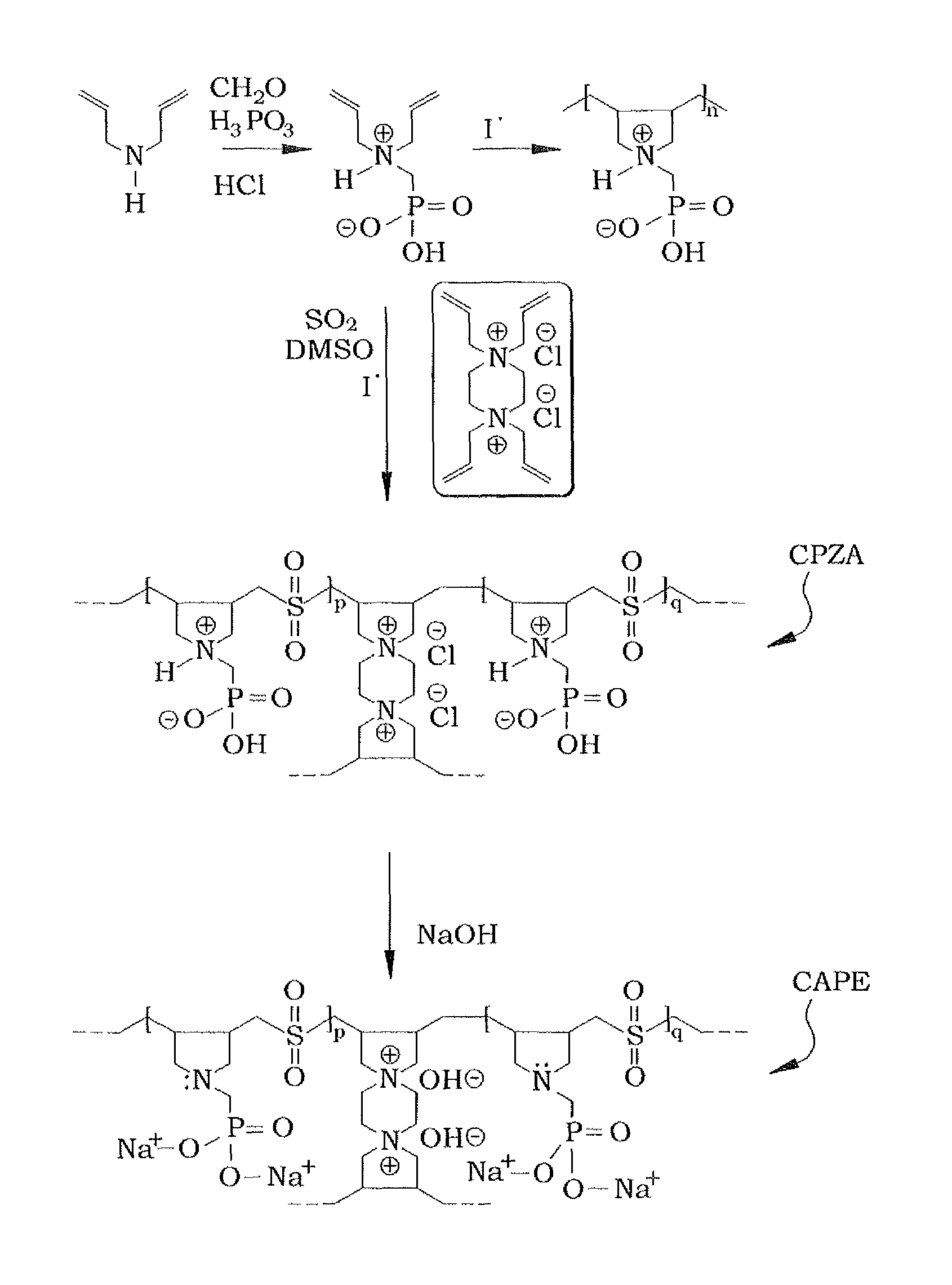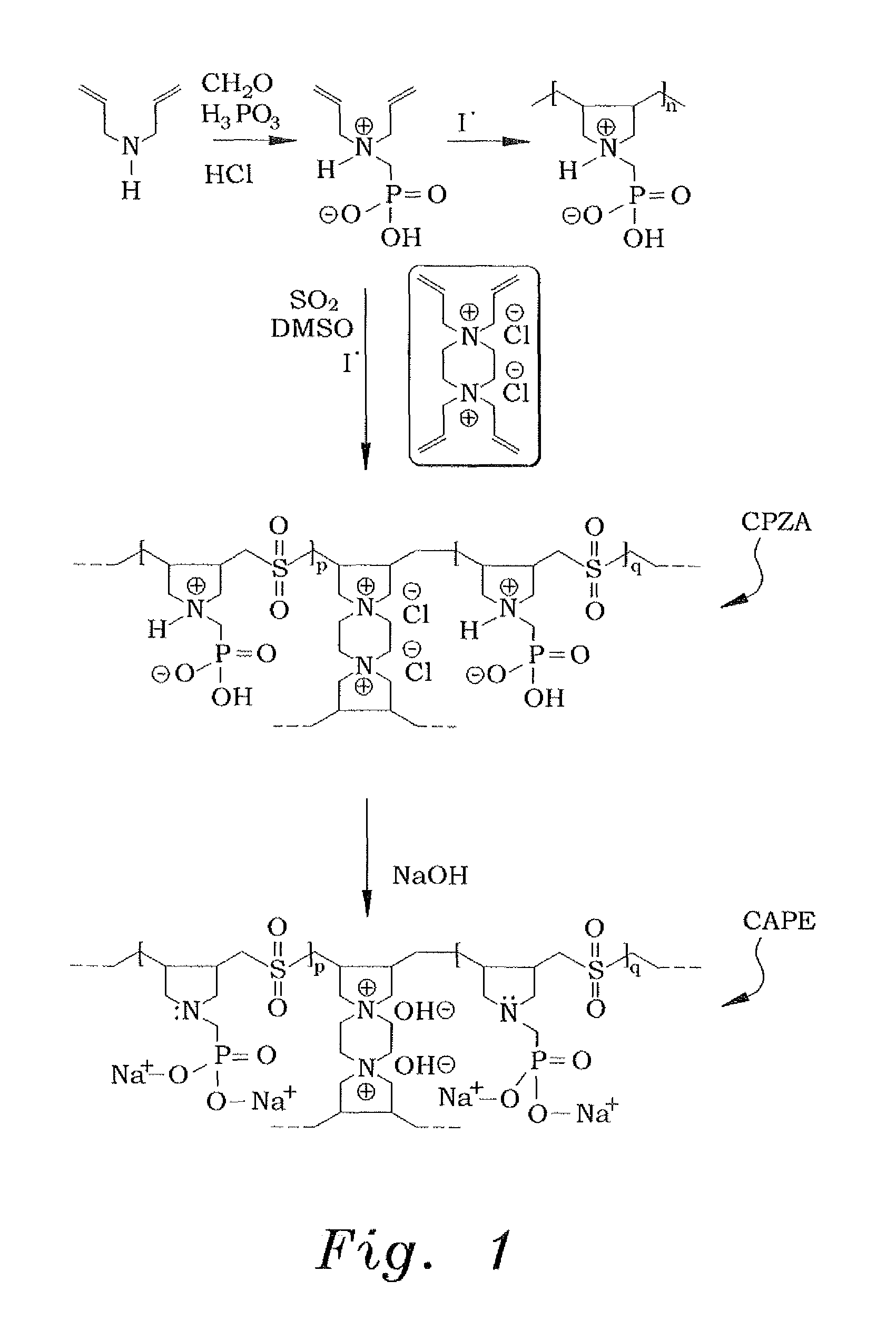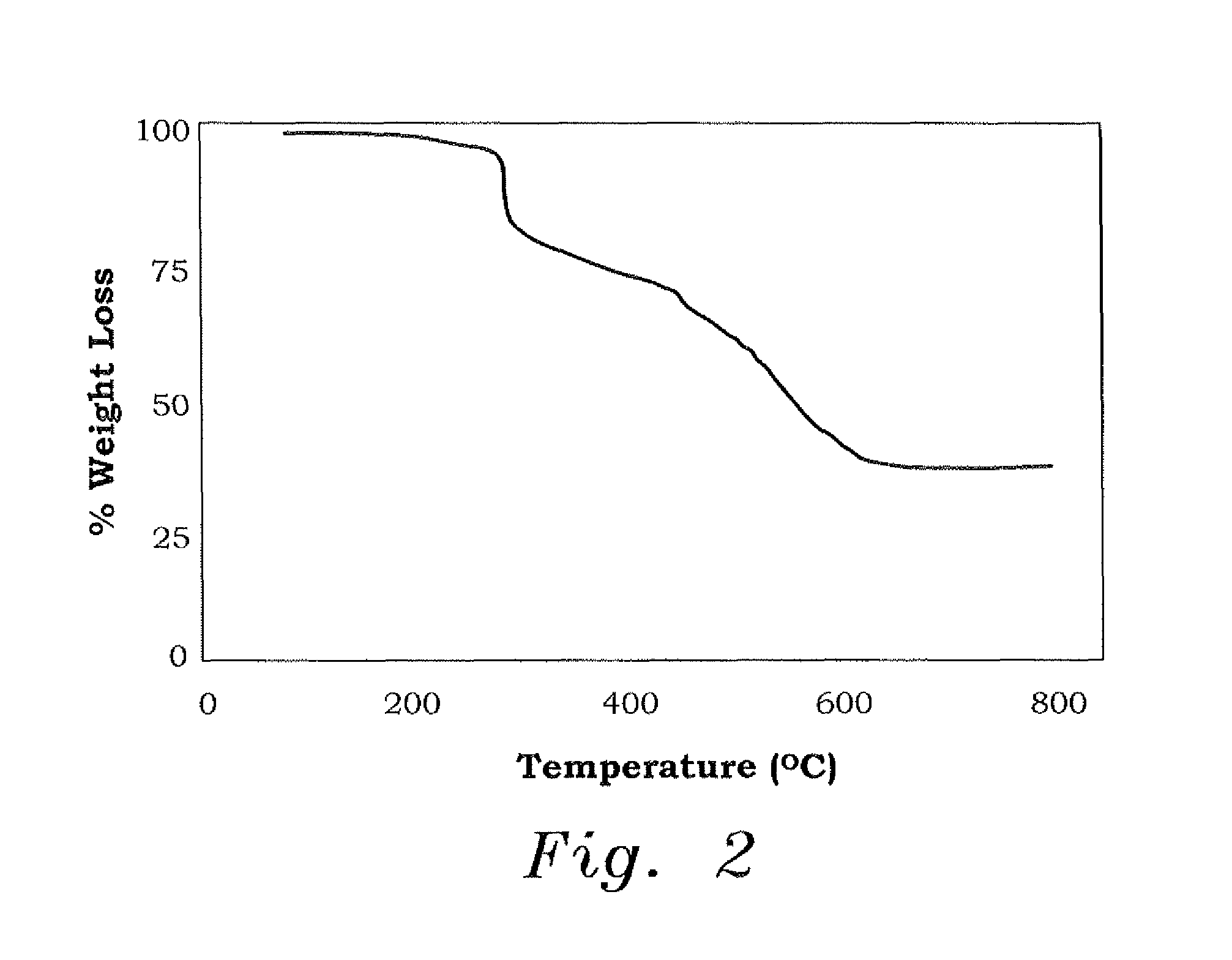Cross-linked polyphosphonate-sulfone composition for removal of metal ions from wastewater
a technology of metal ions and compositions, applied in water/sludge/sewage treatment, reverse osmosis, cation exchangers, etc., can solve the problems of difficult and costly synthesizing, not 100% effective in the removal of metal ions,
- Summary
- Abstract
- Description
- Claims
- Application Information
AI Technical Summary
Benefits of technology
Problems solved by technology
Method used
Image
Examples
example 1
[0027]In order to make the diallylaminomethylphosphonic acid, the diallylaminomethylphosphonic acid is prepared conventionally, using a modified procedure. An example of such conventional preparation is shown in Kerstin Riedelsberger and Werner Jaeger, “Polymeric aminomethylphosphonic acids—1. Synthesis and properties in solution”, Des. Monomers and Polym., Volume 1, Issue 4, 1998. Diallylamine (0.50 mol) was first added drop-wise to a stirred mixture of phosphorous acid (0.50 mol), 50 mL of water, and 50 mL of concentrated hydrochloric acid under ice cooling and over a period of approximately 45 minutes. The reaction mixture was then refluxed for one hour, during which paraformaldehyde (1.0 mol) was added in portions (ca. 20 minutes). The resulting solution was refluxed for an additional hour and was then evaporated to dryness to obtain 122 grams of diallylaminomethylphosphonic acid. A 1H nuclear magnetic resonance (NMR) spectrum of a mixture containing a known mass of the product ...
example 2
[0033]The procedure for testing the adsorption of the CAPE synthesized in Example 1 for Pb2+ ions was as follows. A mixture of 50 mg of CAPE in 20 mL of a 0.1 mol dm−3 aqueous Pb(NO3)2 solution was stirred using a magnetic stir-bar at different pH values for 24 hours. The resin was filtered and carefully washed with deionized water. The combined filtrate was titrated with a 0.1 mol dm−3 aqueous ethylenediaminetetraacetic acid (EDTA) solution to determine the amount of Pb2t remaining. The adsorption capacity qPb2+ was calculated as
[0034]qPb2+=(C0Cf)VW
mmol / g, where C0 and Cf are the respective initial and final concentrations of Pb2+ ions, W is the weight of the polymer in grams, and V is the volume of the solution in mL. The data presented below are the average of triplicate runs, which varied by less than 4% in each case studied.
[0035]For adsorption kinetic studies, the resin sample was stirred in a 0.1 mol dm−3 Pb(NO3)2 solution for different adsorption times at a preferred pH. ...
example 3
[0036]Similar experiments were conducted for the adsorption of Cu+2 ions in a 0.1 mol dm−3 aqueous Cu(NO3)2 solution. The amount of Cu2+ ions remaining in the solution was determined by iodometric titration using excess KI and a 0.1 mol dm−3 aqueous Na2S2O3 solution. Finally, the desorption efficiencies of Pb2+ and Cu2+ ions were measured using 0.1 mol dm−3 HNO3.
Results
[0037]The ion exchange capacity (IEC) of CAPE was found to be 6.29 mmol / g, which illustrates the ability of the resin to adsorb metal ions (M2+) as a result of the presence of chelating ligands of —N and phosphonate motifs —P(═O)(O−)2. The bands in the IR spectrum of the resin in the region of 900-1050 cm−1 are attributed to the phosphonate P—O vibrations, and the two strong absorptions at ˜1120 cm−1 and ˜1300 cm−1 were assigned to the asymmetric and symmetric vibrations of SO2 unit (the A curve in FIG. 3). The IR spectra of CAPE loaded with Cu2+ and Pb2+ (the B and C curves in FIG. 3, respectively) revealed the incre...
PUM
| Property | Measurement | Unit |
|---|---|---|
| temperature | aaaaa | aaaaa |
| pH | aaaaa | aaaaa |
| temperature | aaaaa | aaaaa |
Abstract
Description
Claims
Application Information
 Login to View More
Login to View More - R&D
- Intellectual Property
- Life Sciences
- Materials
- Tech Scout
- Unparalleled Data Quality
- Higher Quality Content
- 60% Fewer Hallucinations
Browse by: Latest US Patents, China's latest patents, Technical Efficacy Thesaurus, Application Domain, Technology Topic, Popular Technical Reports.
© 2025 PatSnap. All rights reserved.Legal|Privacy policy|Modern Slavery Act Transparency Statement|Sitemap|About US| Contact US: help@patsnap.com



